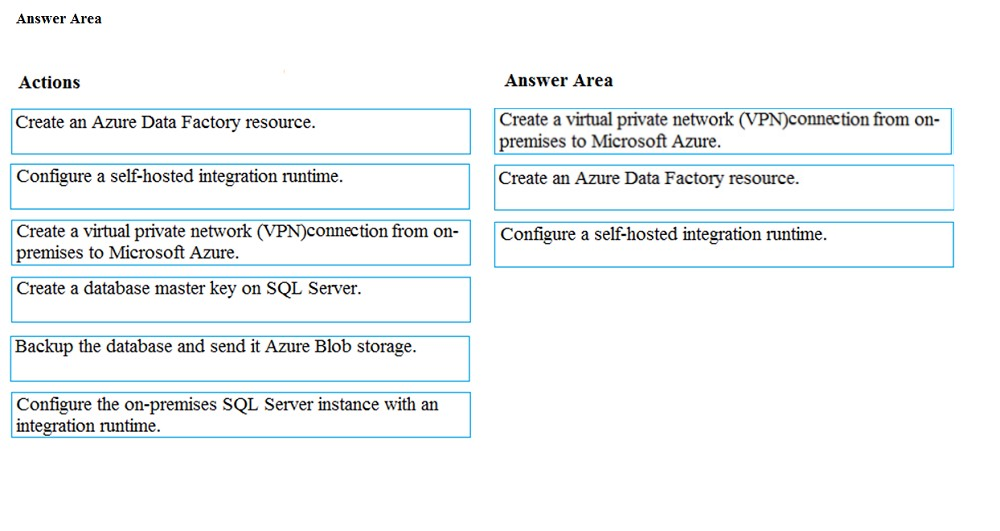

DRAG DROP -
Your company manages on-premises Microsoft SQL Server pipelines by using a custom solution.
The data engineering team must implement a process to pull data from SQL Server and migrate it to Azure Blob storage. The process must orchestrate and manage the data lifecycle.
You need to configure Azure Data Factory to connect to the on-premises SQL Server database.
Which three actions should you perform in sequence? To answer, move the appropriate actions from the list of actions to the answer area and arrange them in the correct order.
Select and Place:

cnuusd
Highly Voted 5 years, 3 months agoavestabrzn
5 years, 2 months agozenomas
5 years, 1 month agoYuri1101
5 years agoBRW
4 years, 3 months agoepgd
Highly Voted 5 years, 5 months agoJohn123123
5 years, 1 month agozenomas
5 years, 1 month agovisakh
4 years, 11 months agocowtown
4 years, 10 months agocadio30
Most Recent 3 years, 12 months agosonu_agrawal
4 years, 1 month agojoguerra
4 years, 3 months agosyu31svc
4 years, 5 months agogroy
4 years, 7 months agoBRW
4 years, 3 months agoExamPwnr
4 years, 7 months agodumpsm42
4 years, 4 months agodumpsm42
4 years, 4 months agoAbhitm
4 years, 11 months agomaciejt
3 years, 11 months agoLuke97
4 years, 11 months agoTheCyanideLancer
4 years, 11 months agokilowd
4 years, 8 months agozenomas
5 years, 1 month agoAAJ
5 years, 1 month agoMilindD
5 years, 2 months agokilowd
4 years, 8 months agoepgd
5 years, 5 months agoKampai787
4 years, 6 months ago